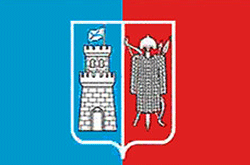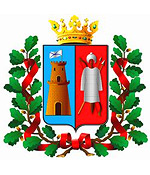Use the verb to be in the correct tense form. (Present Simple / Past simple / Future Simple)
Present Simple Fred _____ thirteen now. «____ you English? «No, l _________. Her name _____ Ann. «______ David a good friend?» «Yes, he _______». __________ these men doctors? «You_______ from Belarus, _________ you?» «Yes, that______right». There__________ a nice lake in the forest. Let’s go! There ________no more questions, _________there?
Past Simple «When you ________ a small child, _________ you happy?» «Yes, I ________. I ________ very happy.» They (not) ________ ready for the lesson last Tuesday. The days_________ cold and wet last September. There ________20 pupils in our class last year.
Future Simple 17. He ________ 13 years old tomorrow. 18. I ________ back home at 6 o’clock. 19. We __________ at the library at that time. 20. They __________ here at 3 o’clock. 21. They ________ happy to see us.
Формы времени глагола to be в обороте there is/there are:
Конструкция there is (there are) сообщает о месте нахождения того или иного предмета, лица, информация о которых еще неизвестна.
Present Indefinite: there is/there are – есть, находится;
Past Indefinite: there was/there were – был, находился;
Future Indefinite: there will be (одна форма для мн. и ед. числа) – будет находиться;
Present Perfect: there has been/there have been – был, находился;
Past Perfect: there had been (одна форма для мн. и ед. числа) — был, находился;
Areупотребляется, если подлежащее – существительное стоит во множественном числе:
Is употребляется, если подлежащее – существительное стоит в единственном числе:
There are chairs at the table. – Возле стола стулья.
There is a chair at the table. – Возле стола стул.
6. Write in «is» or «are».
There _____ two cups of tea on the table. There _____ some milk in the cup. There _____ an orange in the salad. There _____ six balls in the box. There _____ some cheese on the plate. There ______ a blue chair at the door. There _____ five chicks and a hen on the farm. There _____ a table and nine desks in the classroom. There _____ a big window to the left of the door. There _____ three rooms in our country house. _____ there three cups on the coffee-table? ____ there a carpet on the floor? There _____ no cats in the sitting room. There_____ a cat on the table. There_____ 3 dogs in the box There _____4 hens in the house. There _____ a pot on the table. _____ there a bathroom near the kitchen? _____ there four rooms in the house? _____ there a kitchen under your bedroom?
7. Make up sentences, mind the word order (SUBJECT + PREDICATE + OBJECT)
1. pears / there / ten / in the / are / bag / .
2. aren’t / pupils / there / classroom / in the / .
3. an egg / on the / there / plate / is / ?
4. on the / there / a / cat / chair / is / white / .
5. a turtle / on / there / isn’t / farm / this / .
6. at the / two / bikes / door / are / there / .
The City where I Study (Rostov– on-Don)
· SNAPSHOT
Rostov-on-Don city flag

Rostov-On-Don city coat of arms

Talk about these questions.
1. Why do you think fortress is in the flag and coat of arms?
2. What do you think about the origin of the crown in the coat of arms?
3. Is Rostov-on-Don your native city?
4. What do you think is the population of Rostov-on-Don?
· VOCABULARY
Read and memorize the active vocabulary to the text “Rostov-on-Don”.
1. settlement – поселение
2. customs house - таможня
3. trading centre – торговый центр
4. access – доступ
5. to occupy an area – занимать территорию
6. to be situated – располагаться
7. junction – пересечение
8. considerable – значительный
9. volume – объём
10. enterprise – крупное предприятие
11. military glory – военная слава
12. cultural heritage – культурное наследие
13. pace – скорость
14. to consolidate - объединять
15. exhibition hall – выставочный зал
Compose the sentences using the above mentioned vocabulary.
· READING
Read the text and underline or mark the main ideas of this text.
Rostov-on-Don
In 1749, Rostov-on-Don town was founded with the main purpose to be a customs house. The settlement received its name after Saint Dimitry Rostovsky.
The town grew quickly and soon it became the major trading centre of the region. The Don River connected the northern and southern regions of the Russian Empire. Rostov-on-Don city became a major river port.
Rostov-on-Don became the capital of the region in 1928. The previous capital of the region was Novocherkassk (Cossack capital). The city was heavily damaged during the World War II. German armies captured Rostov-on-Don twice (in 1941 and 1942). Present time the city is one of the centres of the new Russian economic growth.
Rostov-on-Don occupies an area of 354 square kilometres and has a population of more than a million people. The city is situated 1226 kilometres from Moscow. It is a junction of many important transportation routes providing the city with an access to three seas – the Black Sea, the Azov Sea and the Caspian Sea – and immediate contact with all the countries of the European part of the CIS, the Middle East and the Mediterranean. An international airport with a capacity of 2.5 million passengers per year functions in the city. By 2018, it is planned to construct the new Platov airport - the largest international airport in the South of Russia with 5 mln. passengers per year.
Rostov-on-Don is the political, economic and cultural centre of the south of Russia, with considerable industrial, banking, trade and scientific potential.
The volumes of industrial production – taking in account only large and medium-sized enterprises – constitutes about 31 billion roubles a year. Almost 50% of the total trade turnover in the region occurs in Rostov.
There are over 800 objects of cultural heritage in Rostov-on-Don. Among them are 470 architectural monuments, 55 archaeological monuments and 106 monumental objects of arts and military glory.
The historical centre of the city is especially rich in architectural buildings and monuments. The building constructed after architect A.N.Pomerantsev’s design - “City Duma” is unique. The building of M.Gorky Drama theatre refers to the masterpieces of world architecture. Its model is kept in the British Museum in London.
Large industrial companies have shown significant interest in Rostov as the capital of the region’s business. These companies include such leaders in the world markets as Samsung, Canon, Panasonic, Philips, Bosch and Siemens.
The investments in the construction in Rostov Region constitute about 7 billion roubles every year. The index of the newly built housing per capita is higher than the one in Moscow. By the pace of the newly built housing, Rostov occupies one of the leading positions in the Russian Federation.
Rostov-on-Don is a large educational and scientific centre of Russia. It has 13 higher educational institutions in the city. There are 4 theatres in Rostov-on-Don, the Don State public library (the largest in the south of Russia), S.V.Rakhmaninov conservatoire, and various interesting exhibition halls.
The Rostov-on-Don zoo opened about 80 years ago and is one of the largest in Europe. The Botanical garden of Rostov State University is considered to be one of the largest in Russia, and it occupies about 161 hectares.
The city is also one of the largest jazz centres in Russia. It has turned into a tradition to conduct art festivals in Rostov-on-Don: “Donskaya vesna (spring)”, “Mini-fest” and international jazz festivals.
· SPEAKING
5. Answer these questions:
1) When was Rostov-on-Don founded and under what circumstances? 2) What is the total area of the city? 3) What is the population of Rostov-on-Don? 4). What was the previous capital of the region? 5) What is the main point of “Southern Gates of Russia” project? 6) What do you know about the international airport? 7) How many objects of cultural heritage are there in Rostov-on-Don? 8) Tell about the historical centre of Rostov-on-Don. 9) What do you know about the Rostov-on-Don zoo? 10) What are the main art festivals in Rostov?
6. Find the situation in the text where the following expressions are used:
Rostov-on-Don town was founded //the previous capital of the region //It is a junction //Rostov-on-Don occupies //the largest international airport //objects of cultural heritage //The project for Free Customs Zone //jazz centres.
7. Work in pairs. Imagine that one of you lives in England but he (she) travelled to Rostov-on-Don. Your friend wants to know your impressions and asks a lot of questions.(You may talk about history of the city, main sights and cultural life.)
8.At homeprepare a presentation about Rostov-on-Don as if you were a travel agent. Try to advertise the city showing and telling about the best sights to attract tourists.(You may use additional sources of information.)
9. Make up the plan of the text and retell it according to the plan (not less then 100 words).
· TRANSLATING
